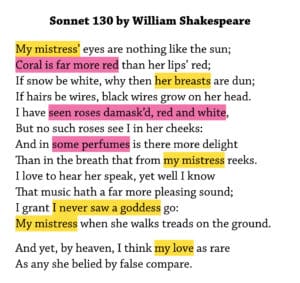This week, Insight writer and Literature teacher Briony Schroor outlines how to prepare for Area of Study 1: Literary perspectives.
—
Although it’s only semester one, it’s important to be thinking about developing your understanding of different critical and theoretical lenses and considering which perspectives to apply to which texts. This will help you prepare for the literary perspectives SAC in Unit 4 and, of course, for Section A of the Literature exam in November.
Reading about the text
Critical introductions and articles
While you’re working through your Unit 3 texts, you should already be doing some critical reading. Start with the introductions in your set texts, and then move to reviews and short critical articles. Many of these can be found online but it’s important that you choose articles from reputable sources. Google Scholar is a great place to find scholarly, peer-reviewed material about your text. If in doubt, always ask your teacher what they think about the critical writing you find.
Reading extended critical writing like this can be difficult to do in isolation, so consider forming a study group with peers to read and discuss different critical approaches and interpretations of the text.
Critical perspectives
Alternatively, rather than reading articles specifically about your text, you might prefer to apply a general critical perspective. Conducting research into different critical approaches will strengthen your understanding of them and help you to develop your writing. Insight’s Literature for Senior Students and Literature Exam Guide offer useful summaries of the different critical approaches, and you can also find information online. Purdue University’s Online Writing Lab website is a good resource, but don’t be discouraged if some of the discussion is quite complex.
Avoiding plagiarism
It’s not a requirement that you use critical sources in the exam, but if you’d like to quote a critic, you should be prepared. Take notes in your own words whenever you read critical resources, and acknowledge any direct quotations by putting them in quotation marks and attributing them to the correct author. This will help you to avoid any inadvertent plagiarism when you refer to this material in your essays.
Approaching the text
Using critical perspectives
Applying different critical or theoretical readings to a text is like using different colours of highlighter in your text. In fact, physically highlighting your text is a good technique to use. Select a key passage and go through it reading from different perspectives, for example, firstly from a feminist perspective and then from a Marxist perspective. Note that you will highlight different things when you’re looking at a text through different lenses.
The poem below shows highlights in yellow for a feminist perspective, and pink for a Marxist perspective.

Using critical articles
If you’re using a scholarly article, the critic has already selected the parts of the text that they want you to focus on. In this case, you should highlight the parts of the text the critic has written about in one colour, and highlight the sections you think are important in another. If the critic has discussed the parts you also think are important, then you are more likely to find this article helpful in developing and demonstrating your understanding of the text.
Preparing to write
Writing from a critical perspective
Having gathered material from the text to support the critical approach you want to take, you should develop an interpretation that focuses on the elements you have highlighted. The following is an example based on the poem above:
Whereas a feminist reading of Shakespeare’s Sonnet 130 notes that the subject of the poem is unnamed and objectified, as she is described as ‘my mistress’ by the speaker, a Marxist reading recognises the likely social class that the speaker belongs to in the comparisons offered to the costly ‘coral’ and ‘roses damask’d, red and white’.
Responding to a critic
If you use a scholarly article, you should consider the strengths of the critic’s interpretation by acknowledging what the critic has said about the text, then move on to look at the parts of the text the critic does not discuss. So, using the example above, a critic might write:
Sonnet 130 is remarkable because the speaker ‘love[s] to hear’ his mistress speak, showing a respectful appreciation for female voice and speech that is unusual for the era.
In this example, you would start by highlighting the line the critic quotes (‘I love to hear her speak’) as you re-read the poem, and you could write a response such as:
While Schroor rightly celebrates the speaker’s delight in the beauty of his mistress’ voice, her article fails to recognise that, despite this, the mistress does not speak in the sonnet, suggesting that the sound of the mistress’ voice is more important to the speaker than what she actually says.
Summing up
When applying a critical lens or a critical reading to a text, remember the following steps:
- Do some research.
- Discuss your thinking with others.
- Read, annotate and highlight your text carefully.
- Construct an interpretation based on your research, your discussions and your reading.
While in Unit 4 you will have to focus your writing on a particular topic, Unit 3 is an ideal time to experiment with different critical and theoretical approaches to your texts – use your time wisely and prepare well.
—
Need a comprehensive guide to the VCE Literature course? Purchase Insight’s Literature for Senior Students 5th edition by Robert Beardwood. This textbook includes a detailed reference section as well as practical guidelines, activities, models and annotated sample responses, enabling students to build confidence and skills in all forms of literary analysis.
Literature for Senior Students 5th edition is produced by Insight Publications, an independent, Australian educational publisher.

